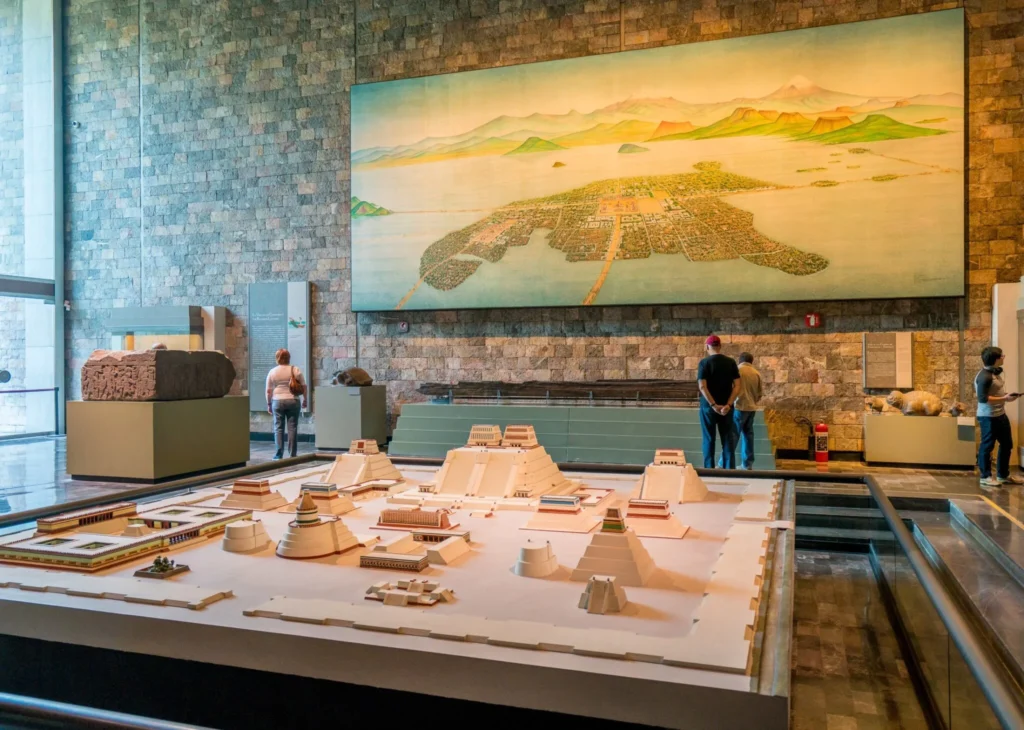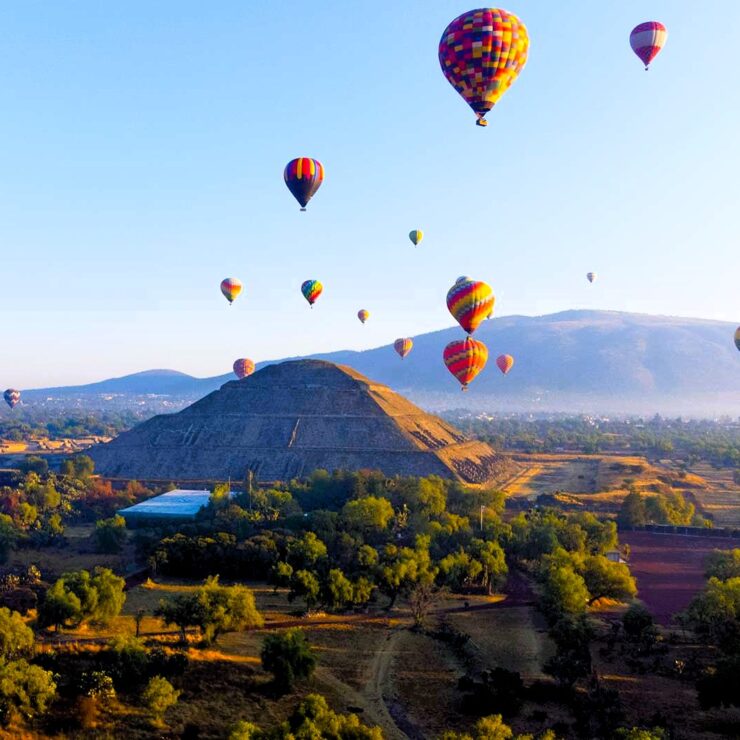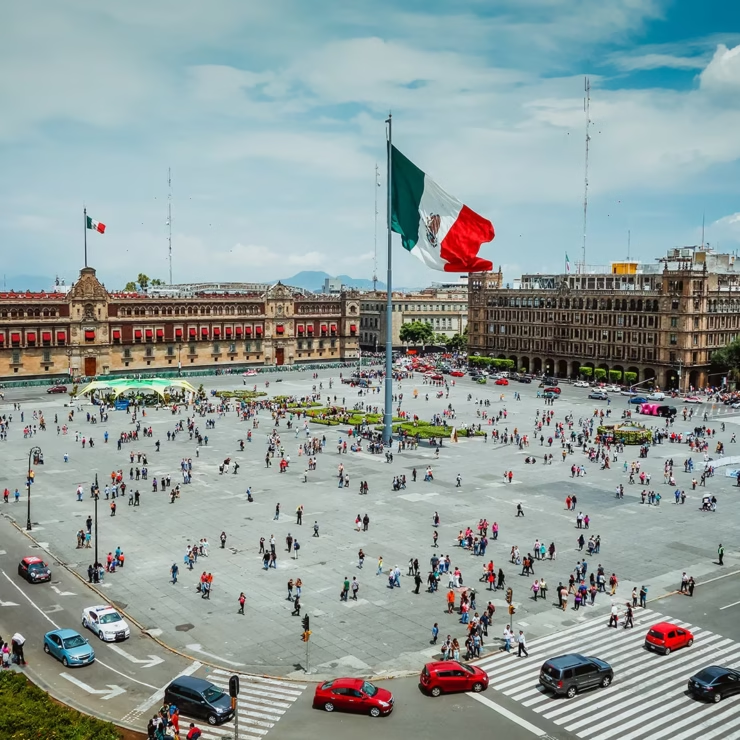Welcome, fellow travelers and history enthusiasts, to an unforgettable journey through time at the National Museum of Anthropology (Museo Nacional de Antropología) in Mexico City. If you’re planning a trip to Mexico’s vibrant capital and are eager to dive deep into the rich tapestry of Mesoamerican history and culture, this world-renowned museum is an absolute must-visit. In this comprehensive guide, I’ll take you through everything you need to know about the museum—from its awe-inspiring architecture and iconic exhibits to practical tips for making the most of your visit. Let’s embark on this cultural odyssey together!
Why Visit the National Museum of Anthropology?
Located in the heart of Chapultepec Park, the National Museum of Anthropology is not just a museum; it’s a portal to the ancient civilizations that shaped Mexico and the broader Mesoamerican region. Often regarded as one of the most important museums of its kind in the world, it houses an unparalleled collection of artifacts from pre-Columbian cultures such as the Aztecs, Mayans, Olmecs, and many others.
Whether you’re a history buff, an art lover, or simply a curious traveler, the museum offers a profound glimpse into the ingenuity, spirituality, and daily life of these ancient societies. From towering stone sculptures to intricate jade jewelry, the exhibits here tell stories of human achievement that date back thousands of years. Plus, with its stunning modern architecture and beautifully curated spaces, the museum itself is a work of art.

A Glimpse into the Museum’s History and Design
Opened on September 17, 1964, the National Museum of Anthropology was designed by renowned Mexican architect Pedro Ramírez Vázquez, along with Jorge Campuzano and Rafael Mijares. The museum’s design is a masterpiece of modernist architecture, blending functionality with symbolic elements that pay homage to Mexico’s indigenous heritage.
One of the most striking features of the museum is its central courtyard, partially covered by a massive aluminum canopy known as “El Paraguas” (The Umbrella). This iconic structure, supported by a single pillar adorned with carvings of Mexican cultural symbols, creates a dramatic interplay of light and shadow, setting the tone for the wonders that await inside. The museum’s layout is thoughtfully organized, with 23 exhibition halls surrounding the courtyard, each dedicated to a specific culture or theme.
The museum spans over 79,700 square meters, making it one of the largest museums in Latin America. Its vast collection includes more than 600,000 objects, though only a fraction are on display at any given time. This sheer scale ensures that every visit feels fresh, with new discoveries around every corner.
Must-See Exhibits: Highlights of the Collection
The National Museum of Anthropology is divided into two main floors. The ground floor focuses on archaeology, showcasing artifacts from pre-Columbian civilizations, while the upper floor is dedicated to ethnography, highlighting the customs and traditions of Mexico’s contemporary indigenous groups. Here are some of the standout exhibits you won’t want to miss:
1. The Aztec Hall: The Sun Stone and Beyond
The Aztec Hall is arguably the museum’s crown jewel, and at its center lies the iconic Sun Stone (Piedra del Sol), often mistakenly referred to as the “Aztec Calendar.” This massive basalt sculpture, weighing over 24 tons, is a testament to the Aztecs’ astronomical knowledge and religious beliefs. Carved in the 15th century, it depicts the god Tonatiuh at its center, surrounded by symbols representing the five eras of Aztec cosmology.
Beyond the Sun Stone, the Aztec Hall is filled with treasures like the statue of Coatlicue, the fearsome mother goddess of life and death, adorned with a skirt of serpents and a necklace of human hearts. These artifacts offer a window into the complex spiritual world of the Aztecs, whose empire once dominated central Mexico.
2. The Maya Hall: Mysteries of an Ancient Civilization
Step into the Maya Hall to explore one of the most sophisticated civilizations in human history. Here, you’ll find intricate stone carvings, pottery, and jewelry that showcase the Mayans’ mastery of mathematics, astronomy, and art. A highlight is the reproduction of the Tomb of Pakal, the ruler of Palenque, complete with his jade burial mask—a symbol of eternal life.
The Maya Hall also features stelae (stone slabs) inscribed with hieroglyphs, offering insights into Mayan history, politics, and mythology. Don’t miss the detailed models of ancient Mayan cities like Chichen Itza, which bring their architectural brilliance to life.
3. The Olmec Hall: The Mother Culture of Mesoamerica
Often called the “mother culture” of Mesoamerica, the Olmecs left an indelible mark on subsequent civilizations. The Olmec Hall is home to the colossal heads—enormous basalt sculptures weighing up to 50 tons each. These mysterious heads, believed to represent rulers or deities, were carved over 3,000 years ago and remain one of the most iconic symbols of ancient Mexico.
In addition to the heads, the hall displays smaller artifacts like jade figurines and ceremonial axes, shedding light on Olmec rituals and beliefs.
4. The Teotihuacan Hall: City of the Gods
Teotihuacan, known as the “City of the Gods,” was one of the largest urban centers in the ancient world. This hall features artifacts from the city, including intricate murals, pottery, and obsidian tools. A standout piece is the reproduction of the Temple of the Feathered Serpent, adorned with carvings of the god Quetzalcoatl.
The Teotihuacan Hall captures the grandeur of a city that, at its peak, housed over 100,000 people and influenced cultures across Mesoamerica.
5. Ethnography Halls: Connecting Past and Present
On the upper floor, the ethnography halls celebrate the diversity of Mexico’s indigenous communities today. With detailed dioramas, traditional clothing, and tools, these exhibits highlight how ancient traditions continue to thrive in modern times. From the Tarahumara of Chihuahua to the Zapotecs of Oaxaca, you’ll gain a deeper appreciation for Mexico’s living cultural heritage.
Practical Tips for Visiting the National Museum of Anthropology
To ensure your visit is as enriching and stress-free as possible, here are some essential tips:
- Location and Hours: The museum is located at Av. Paseo de la Reforma & Calzada Gandhi, Chapultepec Park, Mexico City. It’s open Tuesday to Sunday from 9:00 AM to 5:00 PM. It’s closed on Mondays, so plan accordingly.
- Admission: As of my last update, the entry fee is around 85 MXN (approximately $4 USD) for adults. Admission is free for children under 13, students with ID, and seniors. Entry is also free for everyone on Sundays, though it can get crowded.
- Comment s'y rendre: The museum is easily accessible via public transport. The nearest metro station is Auditorio (Line 7), a short walk away. Alternatively, taxis or ride-sharing apps like Uber are convenient options.
- Time Needed: Given the museum’s size, plan to spend at least 3-4 hours here. If you’re a history enthusiast, you might want a full day to explore every hall in detail.
- Guided Tours: Audio guides are available in multiple languages, and guided tours can be booked at the entrance. A guide can provide deeper context and help you navigate the vast collection.
- Accessibility: The museum is wheelchair-friendly, with ramps and elevators available. Restrooms and a small café are also on-site for convenience.
- Photography: Photography for personal use is allowed in most areas, but flash photography and tripods are prohibited. Always check signage for specific rules.
- Best Time to Visit: Weekday mornings are ideal for avoiding crowds. If you visit on a free Sunday, arrive early to beat the rush.
Beyond the Museum: Exploring Chapultepec Park
Since the National Museum of Anthropology is located within Chapultepec Park, one of the largest urban parks in the world, why not make a day of it? After your museum visit, take a leisurely stroll through the park’s lush gardens, visit the Chapultepec Castle for panoramic views of the city, or rent a paddleboat on the lake. The park is also home to other attractions like the Modern Art Museum and the Tamayo Museum, making it a cultural hub for visitors.
Why the National Museum of Anthropology Matters
A visit to the National Museum of Anthropology is more than just a sightseeing excursion; it’s a profound journey into the soul of Mexico. The museum stands as a testament to the resilience, creativity, and diversity of the country’s indigenous peoples, both past and present. By exploring its halls, you’re not only learning about history but also honoring the cultures that continue to shape Mexico’s identity.
For tourists, this museum offers a unique opportunity to connect with the roots of a nation whose influence extends far beyond its borders. Whether you’re marveling at the Sun Stone, deciphering Mayan glyphs, or simply soaking in the atmosphere, you’ll leave with a deeper understanding of humanity’s shared heritage.
Final Thoughts: Plan Your Visit Today!
If Mexico City is on your travel itinerary, the National Museum of Anthropology should be at the top of your list. It’s a destination that transcends the typical tourist experience, offering a blend of education, inspiration, and wonder. Pack comfortable shoes, bring an open mind, and prepare to be captivated by the stories etched in stone, jade, and clay.
Have you visited the National Museum of Anthropology before? Or are you planning your first trip? Share your thoughts, questions, or experiences in the comments below—I’d love to hear from you! And if you found this guide helpful, don’t forget to share it with fellow travelers who might be eager to explore this cultural gem.
Safe travels, and may your journey through time at the National Museum of Anthropology be as unforgettable as mine!




